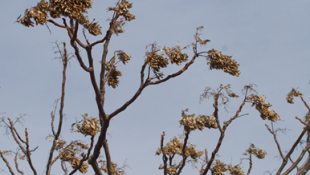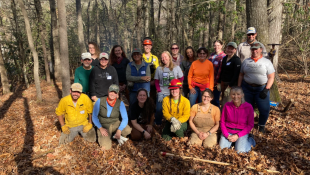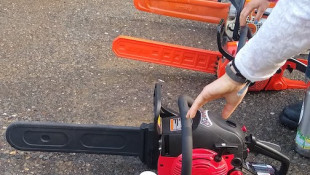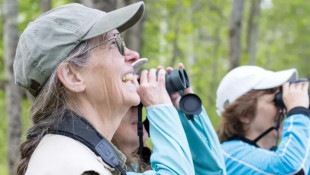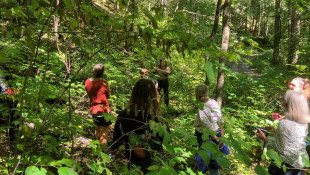Be on the look-out for invasive Oriental bittersweet in holiday decorations.
Article
By:
Renée E. D’Aoust
Eric Rutkow’s "American Canopy: Trees, Forests, and the Making of a Nation" focuses on trees, weaving a fascinating history of our nation through the foundation of our American relationship to trees. By seeing the historical lens of American formation through trees, Rutkow’s breadth includes a conservation, historical, and philosophical focus on trees as the foundation of our communities, laws, and civic virtues and vices. Rutkow writes, “How easy it is to forget that much of American history has been defined by trees.”
Article
Guest writer: Becky McPeake, Extension Wildlife, UA Division of Agriculture.
Do your woods look like a plow has run through it? Are you having problems with something damaging your tree seedlings, and it’s not deer? Are there mud holes along your waterways? These are indications you’ve got feral hogs.
Do your woods look like a plow has run through it? Are you having problems with something damaging your tree seedlings, and it’s not deer? Are there mud holes along your waterways? These are indications you’ve got feral hogs.
Article
Guest Writer: Mary Hightower, Cooperative Extension Service
U of Arkansas System Division of Agriculture, [email protected]
Do knives, spoons in seeds and wooly bear stripes translate into an accurate winter forecast?
U of Arkansas System Division of Agriculture, [email protected]
Do knives, spoons in seeds and wooly bear stripes translate into an accurate winter forecast?
Article
By:
Nicole Strong
Conservationists estimate that up to 20 percent of forested wildlife depends on dead wood like snags and down logs for food, habitat, or cover. Within normal healthy woodland they are essential features, but they are often missing from more regularly maintained forests. It is just too easy to dismiss that log as potential firewood, rather than giving it the chance to live up to another potential simply by leaving the log where it lies.
Article
By:
Nicole Strong
It makes perfect sense to heat with wood. We harvest from within a 10-mile radius of our home. We remove wood from the national forest, from fire-suppressed choked stands full of dead standing and dead downed lodgepole pine. This is forest restoration at it’s most sustainable.
Article
By:
Angela Gupta
Be on the look-out for invasive Oriental bittersweet in holiday decorations.
Article
By:
Renée E. D’Aoust
Eric Rutkow’s "American Canopy: Trees, Forests, and the Making of a Nation" focuses on trees, weaving a fascinating history of our nation through the foundation of our American relationship to trees. By seeing the historical lens of American formation through trees, Rutkow’s breadth includes a conservation, historical, and philosophical focus on trees as the foundation of our communities, laws, and civic virtues and vices. Rutkow writes, “How easy it is to forget that much of American history has been defined by trees.”
Article
Guest writer: Becky McPeake, Extension Wildlife, UA Division of Agriculture.
Do your woods look like a plow has run through it? Are you having problems with something damaging your tree seedlings, and it’s not deer? Are there mud holes along your waterways? These are indications you’ve got feral hogs.
Do your woods look like a plow has run through it? Are you having problems with something damaging your tree seedlings, and it’s not deer? Are there mud holes along your waterways? These are indications you’ve got feral hogs.
Article
Guest Writer: Mary Hightower, Cooperative Extension Service
U of Arkansas System Division of Agriculture, [email protected]
Do knives, spoons in seeds and wooly bear stripes translate into an accurate winter forecast?
U of Arkansas System Division of Agriculture, [email protected]
Do knives, spoons in seeds and wooly bear stripes translate into an accurate winter forecast?
Article
By:
Nicole Strong
Conservationists estimate that up to 20 percent of forested wildlife depends on dead wood like snags and down logs for food, habitat, or cover. Within normal healthy woodland they are essential features, but they are often missing from more regularly maintained forests. It is just too easy to dismiss that log as potential firewood, rather than giving it the chance to live up to another potential simply by leaving the log where it lies.
Article
By:
Nicole Strong
It makes perfect sense to heat with wood. We harvest from within a 10-mile radius of our home. We remove wood from the national forest, from fire-suppressed choked stands full of dead standing and dead downed lodgepole pine. This is forest restoration at it’s most sustainable.

